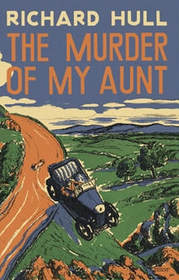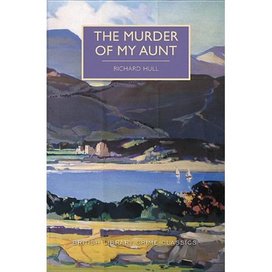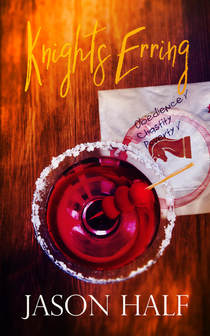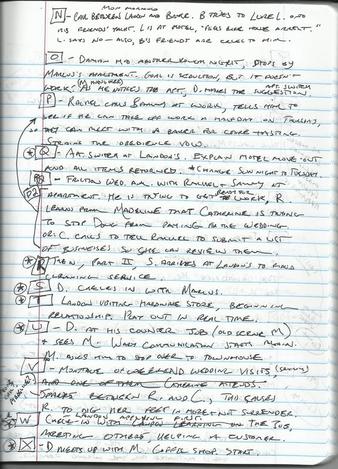
It is also why I read and reread the books of outside-yet-within-the-genre writers Gladys Mitchell and Richard Hull.
The Murder of My Aunt is Hull's first mystery novel, and the one he was compelled to write after working for years as a chartered accountant. It is one of those début books where the exuberance of the author alive to the possibilities of plot and prose and language is evident on every page. Hull chooses as his narrator a conceited, comically misanthropic young man named Edward Powell, who is unhappy with his stifled life in the small Welsh village of Llwll (pronounced, if Edward is to be believed, as "filth") in general and with his disapproving, domineering aunt in particular. As we learn of Edward's opinions and grievances through his confidences in detailed diary entries, we also learn much about his character. This is one of the book's most enjoyable gambits: Hull creates a narrator who is both sympathetic (perhaps pitiable is more accurate) and shallow. One can understand the circumstances of his frustration, but he's also greatly at fault due to his vanity and laziness, as he has no interest in pursuing an independent life and means of income. He is lazy, that is, until he decides that the murder of his aunt would provide freedom and a useful inheritance to boot.
Returning to those elements of strong fiction, Richard Hull incorporates all three with purpose, wit, and a great deal of ironic humor. The plot can hardly be bettered: one person wants to kill another, but the victim refuses to cooperate. In fact, as we only know what Edward reports, we get the feeling that Aunt Mildred might know more about the situation than our diarist thinks, and that creates an excellent mounting tension which connects directly to two age-old dramatic questions: What will happen next? and Who's going to win? Making both Edward Powell and his aunt well-delineated adversaries through personality and motivation, Hull offers up characterization that is as sharp and specific as anything he would later deliver. Further, the book's witty comic tone (for those who appreciate it; not all mystery readers do) is a terrific success. Edward's observations are amusing throughout, and the recounting of an incident where he tries to purchase oxalic acid and instead winds up buying a Christmas card in September is laugh-out-loud funny.

You can check out Kate's great review of The Murder of My Aunt at her crossexaminingcrime site. The book is getting a welcome reprint release from the British Library Crime Classics series and Poisoned Pen Press, presented with a great introduction by scholar and author Martin Edwards. I received an advance eBook copy through NetGalley in exchange for an honest review.


 RSS Feed
RSS Feed